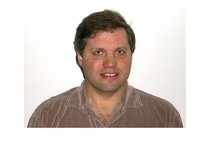Oral history interview with Patrick J. Dolph
- 2002-Oct-09 – 2002-Oct-11

Patrick Dolph was born and grew up in Portland, Oregon, the middle child of three. His father was a dye maker in a box factory, and his mother was an administrative nurse, though she did not work while the children were young. Dolph can remember that from about the age of five he has wanted to be a scientist, though the particular area of his interest has changed. He began wanting to be an entomologist; he collected bugs and mounted them with the aid of his parents. In elementary school he had a fourth-grade teacher who inspired Dolph's interest in biology. In junior high school he became fascinated with the tide pool creatures he discovered while on family vacations in the San Juan Islands off Seattle, Washington, and decided to become a marine biologist. His high school had few science classes, but he took what he could, including the one biology class. The teacher of that class emphasized Mendel's genetics experiments, stirring up Dolph's enthusiasm, the enthusiasm that determined his future. Dolph matriculated at Oregon State University, immediately declaring his major to be biology. He began his genetics classes as a sophomore, greatly influenced by Paul Roberts, a Drosophila geneticist who taught genetics of organisms. In his junior year, Dolph applied to work in Roberts' lab, but was rejected, so he began work in Dallice Mills' plant pathology lab, where he stayed for perhaps a year and a half. Though he had been on his high school's swim team, Dolph was not good enough to continue in college, but he established a number of good friendships. After college Dolph worked in Michael Litt's lab at the Oregon Health Science Center. There he gained confidence he felt he lacked during his college career. He did his Master's work on the genetics of Erwinia stewartii at Ohio State University, working in David Coplin's lab. From there Dolph moved to New York University's PhD program, where he studied adenovirus gene translation in Robert Schneider's lab. Dolph moved then to the University of California at San Diego, to Charles Zuker's lab, where he took up a postdoc, working on arrestin and the regulation of signal transduction in the Drosophila melanogaster visual system. When he finished his postdoc, Dolph accepted an assistant professorship at Dartmouth. He continues his current research on cell death in photoreceptor cells; he plans to study the biochemistry and genetics of apoptosis in the retinal pathway. His days include publishing; teaching; seeking funding; and attempting to balance his work life with life in rural New Hampshire with his wife and two children.
Access this interview
By request 1 PDF Transcript File and 10 Audio Recording Files
Fill out a brief form to receive immediate access to these files.
If you have any questions about transcripts, recordings, or usage permissions, contact the Center for Oral History at oralhistory@sciencehistory.org.









